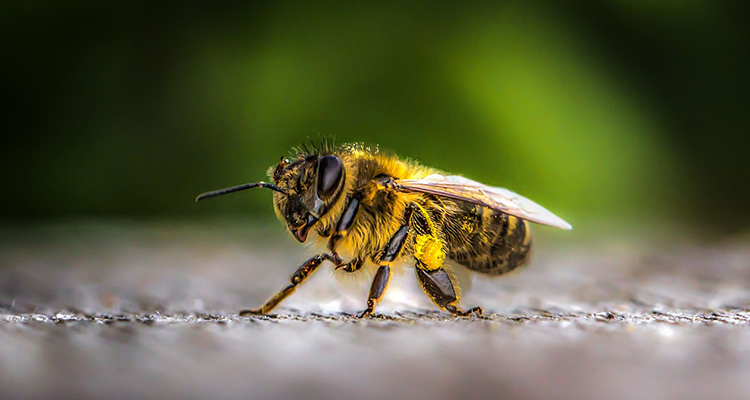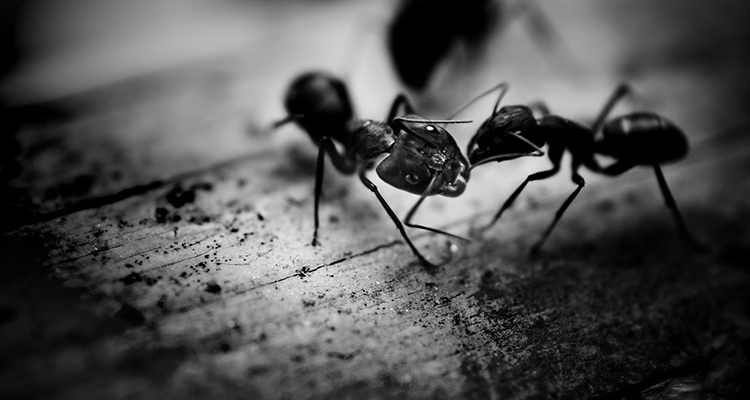Contrary to their namesake, earwigs aren’t inclined to crawl into your ear, but let’s face it—they’re gross! While they may not be a threat to your physical health, earwigs can damage plants in your yard and are generally unwelcome visitors in the home. Get rid of earwigs with these simple tips.
How to Spot Earwigs
Earwigs are thin, reddish-brown insects typically ½”–¾” in length. They are most recognizable by their long pincers, which stick out from their rear. These pincers do not pose a threat to humans as they are not strong enough to puncture the skin. Sometimes, earwigs will excrete an odorous liquid as self-defense. Earwigs do not carry diseases and are not poisonous.
How to Get Rid of Earwigs
Earwigs prefer to live in damp, cool places, either indoors or outdoors. They tend to migrate to areas where they can live undisturbed, which is why you may notice them in your basement storage room or an unattended area of your yard. If the problem seems too big to tackle, you can always contact a pro!
In Your Home
Be aware of potential earwig hotspots. Earwigs seek wet habitats, so pay special attention to rooms with running water like your kitchen, bathroom, laundry room, and utility room.
- Combine one part rubbing alcohol with one part water in a spray bottle. Spray the affected areas as well as any live earwigs. The alcohol will penetrate the earwig’s waxy outer shell and kill it.
- Utilize a store-bought insecticide spray around your home.
In Your Garden
Earwigs feed on plants and vegetation, so you’ll likely see evidence of their destruction in your garden and landscaping. Here are some ways to remove earwigs from your yard.
- Cover the base of your plants with petroleum jelly. Earwigs will be unable to crawl over it. They will leave due to the lack of food sources.
- Create earwig traps by combining equal parts oil (vegetable, olive, etc.) and soy sauce in a plastic container. Cover the container with a lid, and poke holes in it large enough for earwigs to crawl into the trap. Bury several of these containers in the affected area so that the top of the container is flush with the ground. The soy sauce will attract the earwigs, and the oil will prevent the earwigs from crawling out. Dump and refill the traps as needed.
- Sprinkle Borax around heavily populated areas like woodpiles. Be sure to keep children and pets away.
- Sprinkle diatomaceous earth around the affected areas. The rough particles in the powder will scratch away the soft parts of the earwigs’ body and cause them to dehydrate and die. Make sure to wear a mask over your nose and mouth if you do decide to use this method.
Have a pest problem? We can help!
How to Prevent Earwigs
Keep It Clean
- Earwigs will cluster in damp, dark areas with lots of coverage. Keep your yard free of debris, yard clippings, and woodpiles to keep earwigs from moving in.
- Eliminate Wet Areas
- Don’t allow damp wood, leaves, or yard clippings to sit in your yard for extended periods of time.
Structure Proper Drainage
Make sure your home has proper drainage, both inside and outside. Downspouts should drain away from your home, and leaky pipes should be addressed promptly. Don’t allow water to sit on basement floors.
Secure Entry Points
Be sure to repair holes in screens, woodwork, and siding to prevent earwig entry into your home.
Utilize a Dehumidifier
Remove extra moisture from damp, dark areas of your home with a dehumidifier.
If you’re fighting a losing battle against earwigs, contact Springer Professional Home Services. As one of the leading pest control agencies in the Des Moines area, Springer can address and eliminate all of your indoor and outdoor pest issues. Give us a call today!










